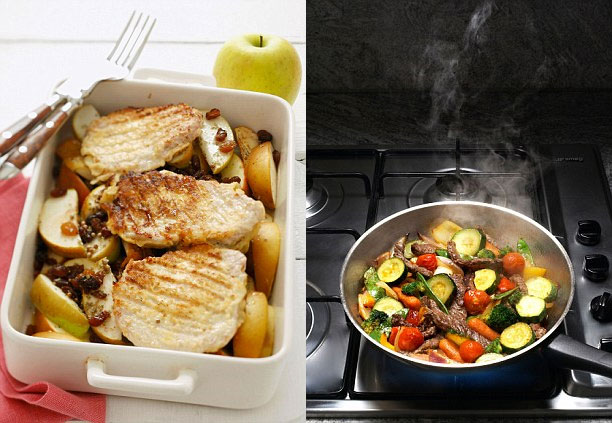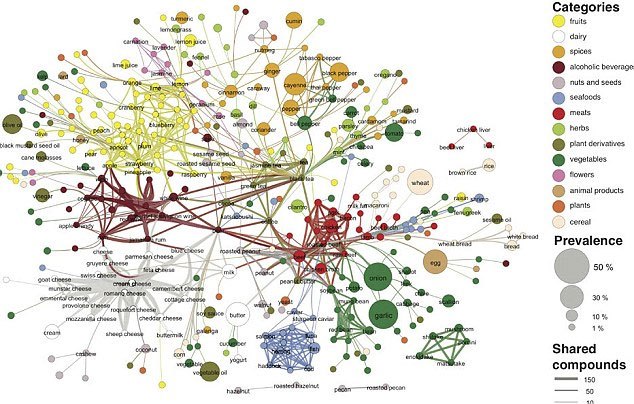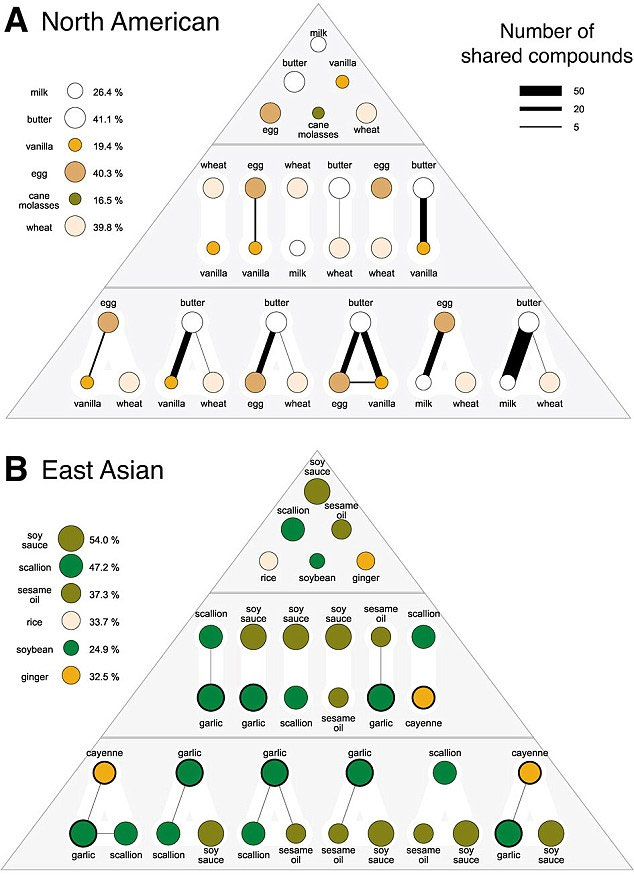Why do Asian - European tastes like water with fire?
It is not that the culinary expert also realizes that European and Asian tastes are very different. However, the cause of this phenomenon is not simple.
The idea of 'combining food' is not new. It is a chemical analysis of the food to see if any of the ingredients share the same flavor. Thanks to this stage, many restaurants have created seemingly unrelated dishes such as white chocolate cooked with caviar fish eggs.
However, the latest study in the UK shows that Asians have a completely different approach to food. In fact, Asians try to avoid the 'taste-matching' foods together.

According to Daily Mail , Cambridge University conducted 381 material analysis from around the world to identify the 1021 main flavors in those ingredients. They seek to connect them into a network as shown below.

The information will then be compared with 56,498 recipes from Epicurious.com and Allrecipes.com, along with Korea's menupan.com website. The ultimate goal is to identify the five cultures of North America, Western Europe, Southern Europe, Latin America and East Asia or combine the most flavorful ones together.
Opposition option
The results were surprising: They found that combining food was not an unspecified rule. Western and Eastern people have a very different way of pairing flavors.

While chefs in North America and Western Europe tend to use common 'combinations' , South European and East Asian dishes prefer to mix opposing ingredients and avoid ingredients. have a lot in common. 13 key ingredients of Western meals such as butter, milk, eggs, though appearing in 74.4% of the dishes, are almost absent in Asian dishes.
It is the fundamental difference in this approach that helps explain why dishes in different geographical areas have such a different taste in the sky.
There are flavors that define dishes such as aromatic basil leaves in Southern European food, or soy sauce in East Asia. Similarly, there are 'classic' combinations such as parmesan cheese and tomatoes in the West or garlic and sesame oil in the East.
'The findings of this study are completely new. Tracing the roots of the difference is that in a different approach, no one has ever thought about it. It will make the idea of incorporating food to change the inner meaning and pave the way for completely new experimental culinary channels , 'said a British culinary expert on the Daily Mail.
- Video: Technology turns water into fire
- Video: How to create fire from lemon extremely unique
- Why is water wet, and fire hot?
- Hot weather everyone loves cold water but it turns out this is the kind of water we need
- Video: Meaning of different colors on fire hydrants
- There is a beautiful fire bird swimming in the water
- Teamwork helps fire ants to die in floods
- Asia: Towards cooperation in space research
- Water: Something you never expected could burn a match
- When did we become addicted to salt?
- High-altitude fire hoses of nearly 600m sweep through the American town
- More than 1.3 million euros to improve clean water in Bac Kan
 'Fine laughs' - Scary and painful torture in ancient times
'Fine laughs' - Scary and painful torture in ancient times The sequence of numbers 142857 of the Egyptian pyramids is known as the strangest number in the world - Why?
The sequence of numbers 142857 of the Egyptian pyramids is known as the strangest number in the world - Why? History of the iron
History of the iron What is alum?
What is alum?